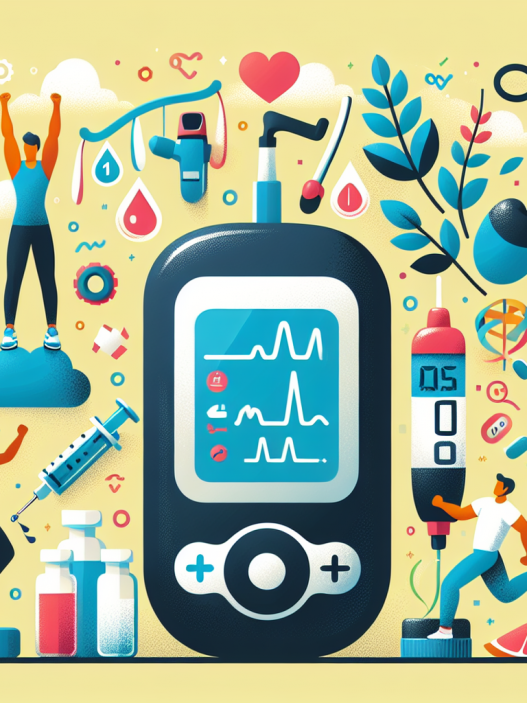[ad_1]
Exercise is a critical component of a healthy lifestyle, particularly for individuals living with Type 1 diabetes. Regular physical activity can improve insulin sensitivity, help manage blood sugar levels, and contribute to overall well-being. However, balancing exercise with the unique challenges of Type 1 diabetes requires careful planning and awareness. This blog provides essential insights and best practices for safely incorporating exercise into your routine while effectively managing your condition.
Understanding the Impact of Exercise on Blood Sugar Levels
Exercise affects blood sugar levels in multifaceted ways. During physical activity, the body uses glucose for energy, which may cause blood sugar levels to drop. However, this effect can vary depending on the type, intensity, and duration of the exercise. For individuals with Type 1 diabetes, understanding how these changes occur is crucial for safe participation in any fitness regimen.
In moderate to vigorous exercises, your muscles require more glucose, which can lead to a decrease in blood sugar levels. This metabolic process is essential for maintaining energy during workouts. However, those with Type 1 diabetes must be cautious, as too much physical activity without appropriate adjustments can result in hypoglycemia (low blood sugar). On the other hand, certain high-intensity workouts may initially cause a rise in blood glucose levels due to stress hormones. This highlights the importance of personalized strategies for pre-workout preparations and post-exercise monitoring.
To manage these fluctuations, individuals should develop a clear understanding of how various exercises affect their blood sugar levels. Keeping a detailed record of blood glucose measurements before, during, and after physical activity can help identify patterns. By analyzing this data, you will be able to determine how much insulin to take, if any adjustments are necessary, and how to fuel your body effectively. All these strategies contribute to a more controlled and safer exercise experience.
Creating a Personalized Exercise Plan for Type 1 Diabetes
A well-structured exercise plan is vital for individuals with Type 1 diabetes to ensure safety and efficacy. Begin by consulting with your healthcare provider or a diabetes educator who can provide personalized recommendations based on your unique health needs, goals, and fitness levels. This can help in avoiding common pitfalls while enhancing your motivation.
In general, a balanced exercise plan should include a mix of cardiovascular, strength, and flexibility training. Cardiovascular exercises like walking, cycling, swimming, or jogging are essential for heart health and can even support blood glucose management. Aim for at least 150 minutes of moderate-intensity aerobic exercise each week. Strength training is equally vital as it builds muscle mass, ultimately enhancing glucose utilization in the body. Include resistance exercises at least twice a week. Lastly, flexibility and balance exercises such as yoga or stretching should also play a role in your routine to prevent injuries and enhance overall mobility.
It’s also essential to consider the timing of your workouts. Choose times that fit well with your daily schedule and routines, as well as your routine insulin dosing. Some individuals find that exercising after meals helps maintain optimal blood sugar levels, while others may prefer mornings. Experiment with different timings to find what works best for your body’s response. Documenting your experiences will help refine your plan over time.
Safety Precautions: Monitoring and Adjusting Before and After Exercise
Staying safe while exercising with Type 1 diabetes hinges on diligent monitoring and proactive adjustments. Always check your blood sugar levels before beginning your workout to ensure they are within a safe range. A blood sugar level below 100 mg/dL may necessitate a carbohydrate intake before starting, such as a piece of fruit, a granola bar, or a sports drink containing some glucose.
Taking precautions during physical activity includes being aware of the signs of hypoglycemia and having a plan in place for treating it. Always carry a source of fast-acting glucose, like glucose tablets or jelly beans, to remedy any sudden drops in blood sugar during or after your exercise routine. Additionally, consider wearing a medical alert bracelet that conveys your condition and insulin regimen in case you encounter difficulty during exercise.
Post-exercise monitoring is equally crucial. Check your blood glucose levels to see how your body reacted during your workout and if adjustments to insulin or food intake are needed for next time. Many people with Type 1 diabetes experience a delayed drop in blood sugar levels for up to 24 hours post-exercise, known as "exercise-induced hypoglycemia." Being mindful of how your body responds in the hours following your workout can help you make safer choices moving forward.
Nutrition and Hydration: Fueling Your Body for Exercise
Proper nutrition and hydration play vital roles in managing Type 1 diabetes and sustaining energy levels during exercise. Before workouts, it’s essential to fuel your body adequately. Opt for carbohydrate-rich snacks that are low in fat, as fats delay digestion and can cause unpredictable glucose responses during exercise. Aim to consume these snacks 30 to 60 minutes before your workout, ensuring suitable energy availability without causing spikes in blood sugar levels.
During prolonged or high-intensity workouts, consuming small amounts of carbohydrates can help maintain your energy levels. Keeping sports drinks or gels on hand can provide a quick source of glucose if you begin to feel low energy or hypoglycemic during your session. The key is to find a balance that provides energy without causing excessive spikes in blood sugar levels.
Hydration is another critical aspect. Individuals with Type 1 diabetes may have an increased risk of dehydration; thus, staying well-hydrated is essential, especially during vigorous exercise. Water should be your primary beverage of choice, but for extensive workouts that exceed one hour, consider incorporating electrolyte drinks to replace lost minerals. Establishing a hydration routine can help you maintain optimal blood glucose levels and performance during exercise.
Utilizing Technology and Support Networks for Better Management
In today’s digital age, various technologies can assist in the management of Type 1 diabetes during exercise. Continuous glucose monitors (CGMs) provide real-time data on blood glucose levels, allowing for timely adjustments to insulin or carbohydrate intake during workouts. These devices can alert you to any significant changes in blood sugar, enabling you to respond quickly and effectively.
Additionally, smartphone applications designed for diabetes management can track your exercise, blood sugar levels, and nutrition, creating a comprehensive overview of your health. These tools empower individuals with Type 1 diabetes to make informed decisions based on their unique data patterns. Leveraging this technology can enhance your overall performance and ensure a proactive approach to managing your diabetes during exercise.
Moreover, connecting with support networks can be invaluable. Online forums and local support groups allow individuals with Type 1 diabetes to share their experiences, tips, and resources related to exercise. Peer support can boost motivation and accountability, making your fitness journey more enjoyable and sustainable.
Consulting Professionals: The Importance of Regular Check-ups
Regular consultations with your healthcare provider and diabetes management team are essential for individuals with Type 1 diabetes. These professionals can offer tailored guidance about exercise adaptations, ongoing insulin management, and overall diabetes care. Whether you’re embarking on a new exercise regimen or encountering challenges in managing your blood sugar, maintaining open communication with your doctors is critical.
Endocrinologists, dietitians, and certified diabetes educators can help create a coordinated plan that incorporates exercise into your life safely. They can also assist in any necessary adjustments to your insulin regimen and monitor your long-term health, including factors such as cardiovascular health, kidney function, and other potential complications associated with diabetes.
Furthermore, keeping track of your physical and mental well-being during exercise is essential for overall health. If you experience any adverse effects or complications related to diabetes and exercise, such as persistent high or low blood sugar levels, discuss these with your healthcare team as soon as possible. They can help troubleshoot and enhance your exercise approach accordingly.
In conclusion, exercise can enhance the quality of life for individuals with Type 1 diabetes, provided that it’s approached with care and attention to personal needs. By understanding how different activities impact blood sugar levels, developing a personalized exercise plan, and remaining vigilant about safety through regular monitoring and nutrition, individuals can safely enjoy the numerous benefits of physical activity. Combining technology, support networks, and ongoing consultations with healthcare professionals creates a well-rounded approach to navigating exercise and Type 1 diabetes, empowering you to stay active and healthy for years to come.
[ad_2]



















